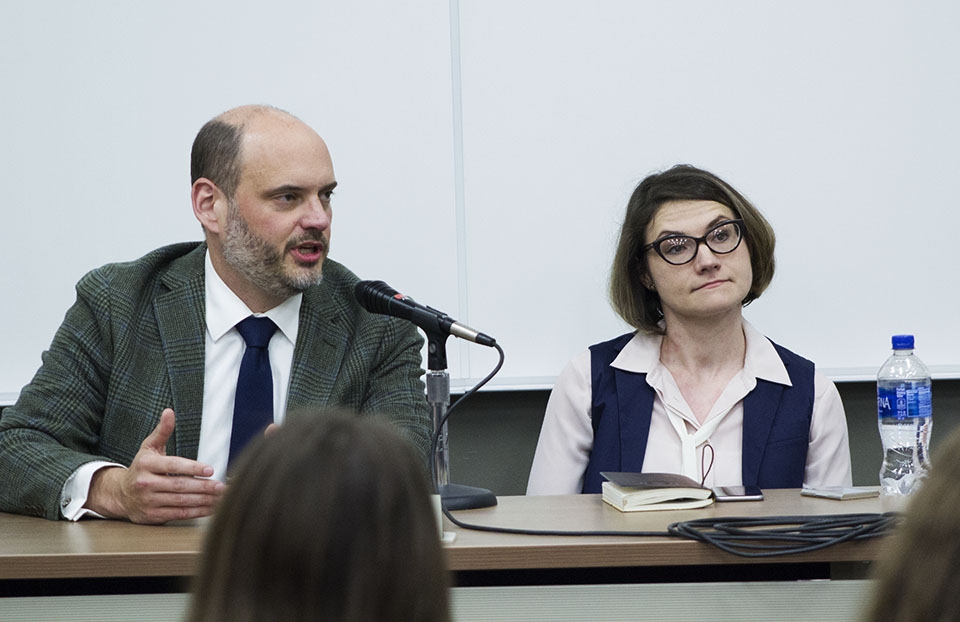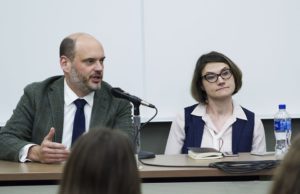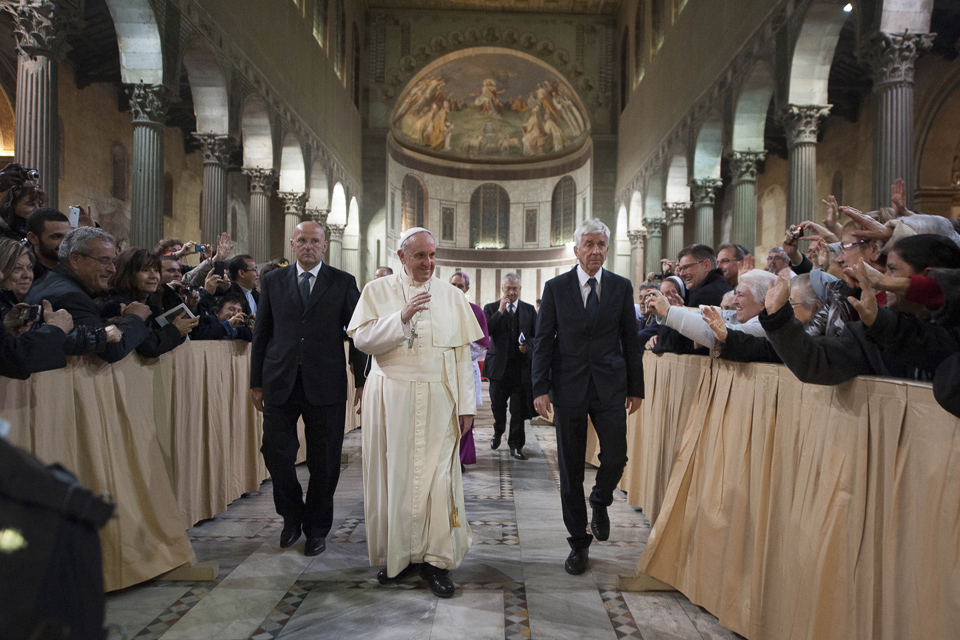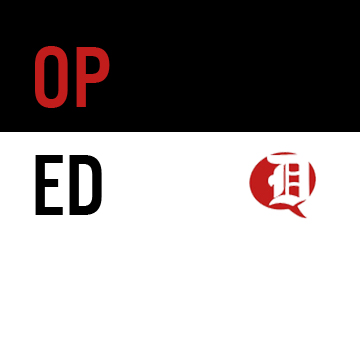
Joshua Gillin, left, and Mila Sanina, two journalists, participated in a panel on media literacy, sponsored by Duquesne SPJ club.

Joshua Gillin, left, and Mila Sanina, two journalists, participated in a panel on media literacy, sponsored by Duquesne SPJ club.
Raymond Arke | News Editor
01/25/18
Fake news. Alternative facts. Crooked media. Over the past year, these phrases have fixated themselves into everyday life.
The dangers these labels present and what they really mean took center stage at “Media Literacy and Battling Fake News,” a panel discussion sponsored by the Duquesne chapter of the Society of Professional Journalists and the McAnulty College of Liberal Arts.
Moderated by Duquesne alum and Pittsburgh Post-Gazette reporter, Julian Routh, the Jan. 23 panel featured Joshua Gillin, a staff writer for the Tampa Bay Times and former reporter for PolitiFact Florida, and Mila Sanina, executive editor for PublicSourcePA, an independent Pittsburgh media outlet. Gillin and Sanina sought to explain fake news and suggest ways an average person can fight against it.
Gillin had spent his time at PolitiFact directly combatting trending stories.
“My job was to disprove false stories … [and show] why they were false,” he said.
He also contested the Trump administration and its supporters’ use of the phrase “fake news” against mainstream media sources, calling it “a deliberate attempt to delegitimize media outlets … That is not the definition of fake news.”
Sanina agreed and explained that the retooling of the label is “Orwellian in its nature.”
“It is an attempt to undermine the institution of the free press … to put doubt in your mind,” she said.
Gillin said that the working definition of “fake news” at PolitiFact was “a deliberate attempt by a media outlet to deceive a consumer.”
These attempts to weaponize the term against legitimate media outlets could be very dangerous, Sanina said.
“The threat is real and it undermines reason and the value of truth,” she warned.
Sanina said she knows from experience what it is like in a country with no freedom of the press.
“As someone born in the USSR, I can appreciate how difficult it is to live somewhere with no protections of the press,” she said. “There are places in this world where people die for truth.”
Both journalists said that the problem of fake news has existed for a long time. Gillin cited the 1804 presidential election where Thomas Jefferson supporters charged that John Adams was a “hermaphrodite,” and Adams’ supporters tried to spread a rumor that Jefferson had actually died.
Sanina agreed, saying that fake news is “not a new phenomenon,” but has only escalated as the media landscape has changed.
“Less and less are going to the New York Times, the Washington Post. [People are] enabled by channels and platforms that … have made us more prone to confirmation bias,” she said.
The consequences of a population confused and misled are grave, Gillin warned.
“The big danger is that you end up with an uninformed electorate,” he said, and the problem is more acute than ever because, “You guys get hit with more media crap than any generation before you.”
Sanina explained that PublicSource has held a workshop to help educate more people titled “How Not to Be Bamboozled by Fake News.”
“We have to be talking broader about media literacy. Media literacy has become very, very needed,” she said. “It is unfortunate that media literacy in Pennsylvania, like civics, is not a required course.”
Sanina suggested visiting sites like snopes.com and politifact.com, along with “being prudent in what you share.”
Gillin also suggested not to get caught in the “media echo chamber” of outrage over nearly every story because people in that bubble are “not normal people.”
“I think normal people care about the riblet special at Applebee’s,” he joked.
Sanina added that a balance has to be found to get the general public to care about real, quality journalistic pieces. She noted that the most read sections of local news sites is sports, which means lots of important stories get missed.
“It is quite discouraging to see evidence-based journalism that has not resulted in accountability,” she said. “The truth gets drowned.”
As fake news has continued to prosper in the social media environment, it has evolved, Gillin warned.
“Fake news stories have gotten trickier. [Fake outlets] will take real events and skew things about them,” he said. “It is very insidious.”
He mentioned the case of Christopher Blair, a man Gillin described as “a big, fat, middle-aged white guy who lives in Maine.” Gillin interviewed Blair who is responsible for creating numerous fake news websites, yet calls his work political parody.
Articles from sites like Blair’s, when paired with the Trump administration’s weaponization of the phrase “fake news,” can inspire real life violence. For instance, the panelists brought up the Pizzagate conspiracy which inspired a man to fire shots into a Washington D.C. pizza shop and the recent arrest of a man who placed calls to CNN threatening to kill journalists.
“It is tragic we have come to this,” Sanina said. “It is a dangerous time to be a journalist.”
After answering numerous questions from the audience, both panelists were happy with how the evening went.
“People had to come for class … but if they leave thinking about something they did not think a lot about before, then it was worth it,” Gillin said.
Sanina agreed, saying she hoped the night had been informative.
“I hope that people learned a lot and gave them a lot of food for thought,” she said. “[Be] much more skeptical about how they are spending their time online.”




